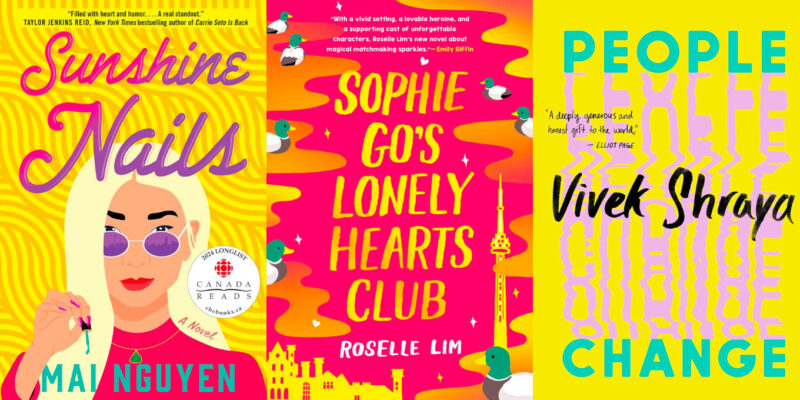Travel
How I Learned to Love an All-Inclusive Beach Vacation
"My travels usually land me in the middle of nowhere, far away from people, but Turtle Island nudged me out of my misanthropic shell."
by : Chloe Berge- Oct 19th, 2023
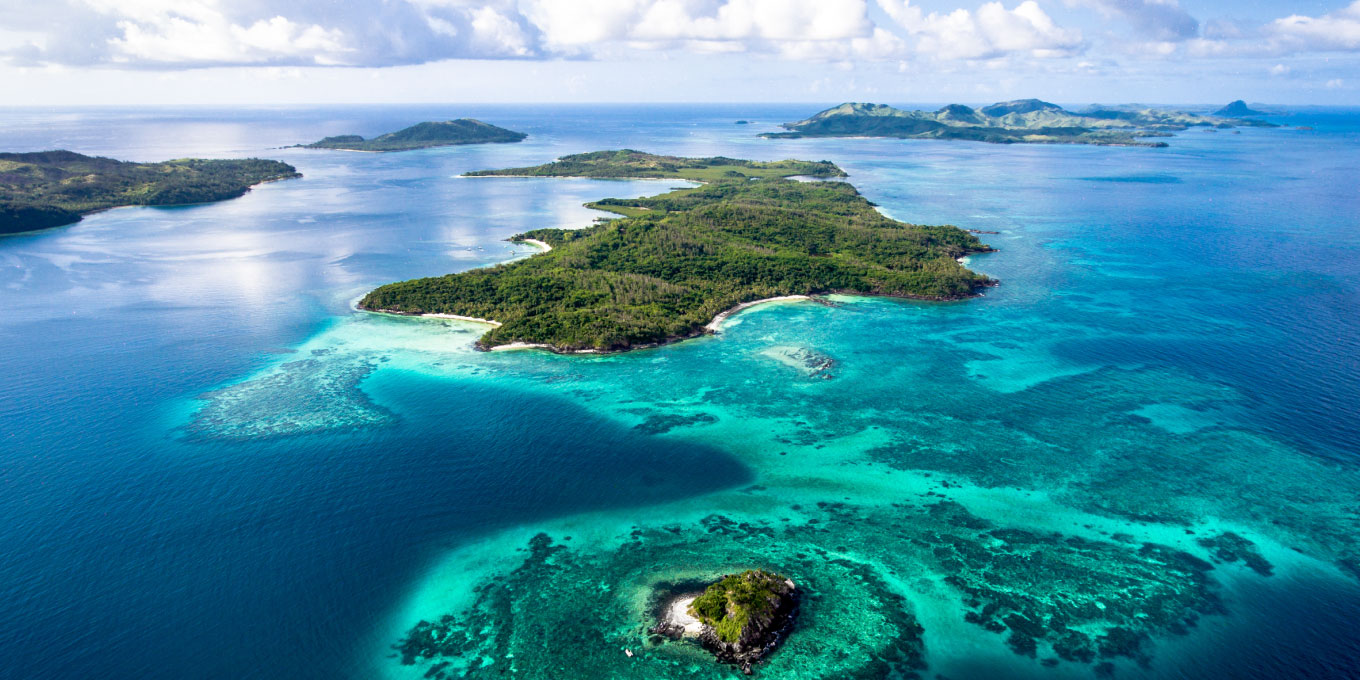
Turtle Island
I am not a beach person. A tropical holiday—during which, at its worst, I’m sweating under the searing sun in an all-inclusive resort’s boozy haze—holds little appeal. I’m one of those insufferable travellers who instead tends to plan a gruelling high-altitude trek or otherwise exhausting escapade, meaning I almost always need a vacation from my vacation. But when the opportunity to spend a week in the Yasawa Islands—an archipelago of 20 volcanic formations in northwest Fiji—presented itself this past winter, I looked out the window at Vancouver’s brooding slate sky and rethought my unfounded aversion to the tropics.
And this is how I somehow find myself in a picture-perfect paradise screensaver come to life. The clear sparkling water rushes over an immaculate stretch of beach, and in the shade of shaggy palm trees, I dig my toes into white sand as fine as powdered sugar. My husband and I have this beach on Turtle Island, one of Fiji’s most luxurious hideaways, to ourselves for the next three hours as we enjoy a private picnic. I already feel restless.
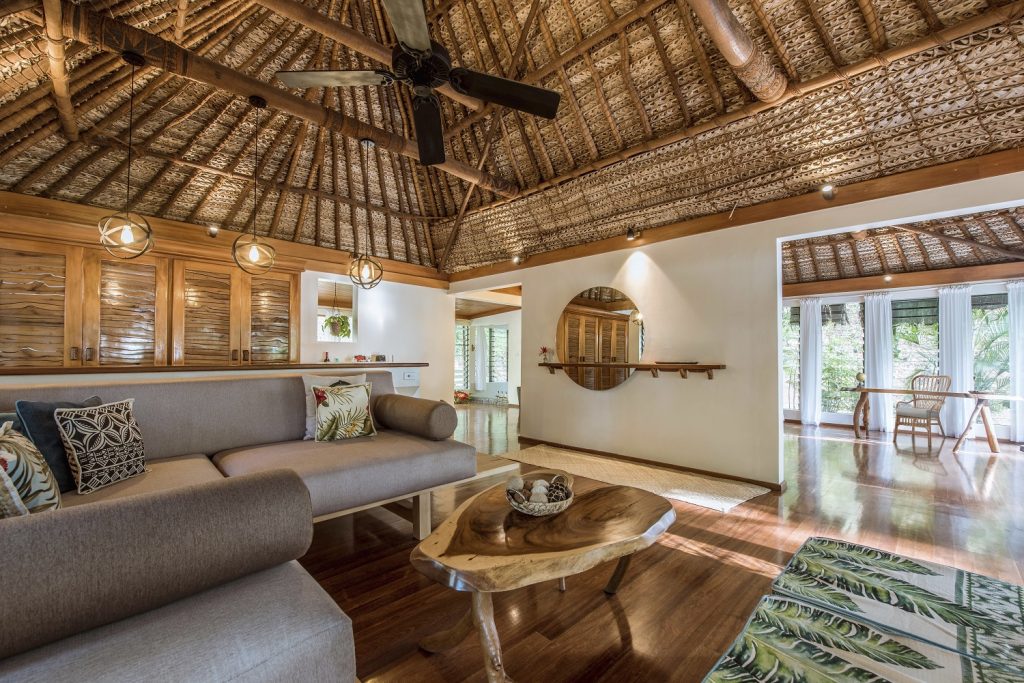 Turtle Island
Turtle IslandOne of Turtle Island’s breezy beachfront bures.
“Chloe, relax,” says Laité Degei, our “bure mama,” with a wink while arranging our lunch, which is complete with champagne. She must have picked up on my antsy energy. Bure mamas are Turtle Island’s take on personal butlers, with one “mama” dedicated to each of the 14 bures, or thatched-roof cottages, that dot the 500-acre private island’s beachfront. This is just one of the services that sets Turtle Island apart from other all-inclusive resorts in the area, and I’m reluctant to even label it as such. It’s intimate, for one thing, hosting a maximum of 28 guests at a time, and I’m surprised to discover that the nightly price tag covers gourmet fresh-from-the-sea-and-garden cuisine imagined by Fijian chef Beni Betekoaka, snorkelling and scuba diving, horseback riding, traditional artisan workshops, medicine walks and lantern-lit dinners on a floating pontoon.
The resort is part of a global all-inclusive renaissance in which the hassle-free-tourism model is paired with elevated experiences that go way beyond free-flowing daiquiris. “We have seen a huge demand in requests for luxury all-inclusives, but instead of the typical resort—a massive 1,000-room hotel with long buffet lines, mediocre food and loud games by the pool—travellers now prefer smaller resorts with top culinary offerings and services and more upscale activities, such as water-skiing, vintage-wine tasting, sailing excursions and tennis lessons with a pro,” says Alisa Cohen, founder of Luxe Traveler Club, a Washington, D.C.-based boutique travel agency.
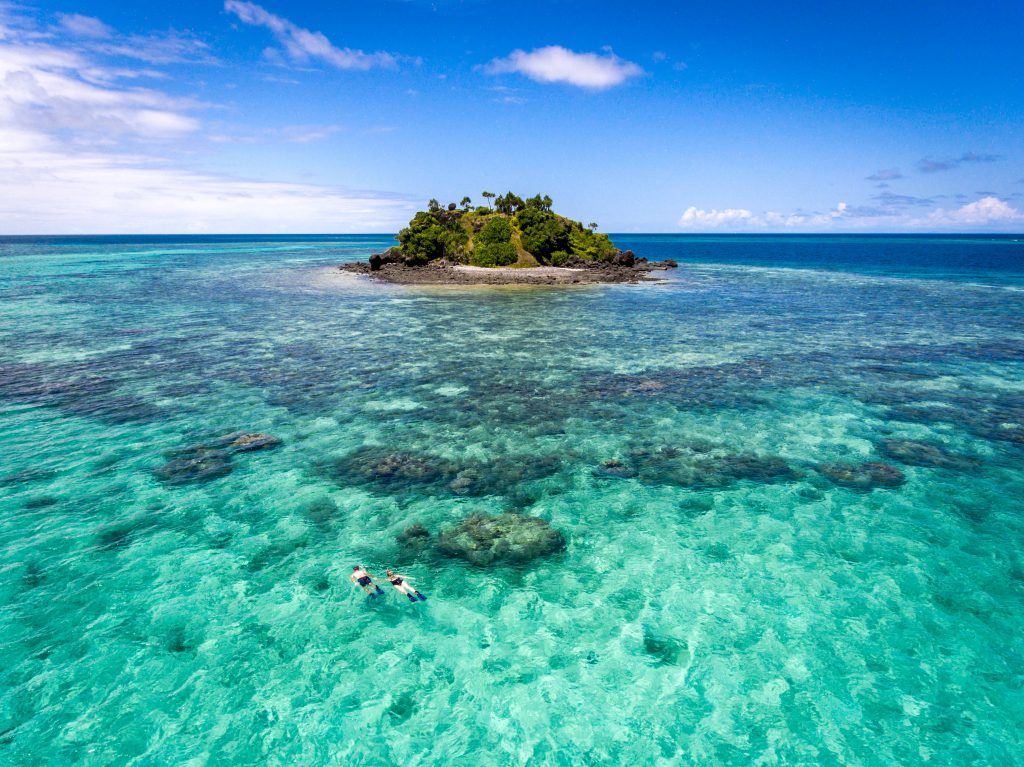 Turtle Island
Turtle IslandActivities on Turtle Island include daily snorkelling excursions over technicolour reefs.
While many all-inclusive monstrosities around the world are eyesores, the breezy, spacious bures at Turtle Island blend into the lush forest, and I learn that the resort has revitalized the landscape too. When founder Richard Evanson first arrived on Turtle Island, or Nanuya Levu, in 1972, he discovered it had been razed by grazing goats and started the process of reforestation. Since then, 500,000 trees, including mahogany and pine, have been planted, and the resort has worked to preserve the island’s mangrove wetlands. Now, neon butterflies flit around fuchsia flowers, and guests wake to a melodic symphony of birdsong. Reforestation has not only bolstered biodiversity but also helped combat coastal erosion—a proactive move in a climate-vulnerable country where communities are already relocating due to sea-level rise.
“Going all-inclusive does not mean giving up on sustainability,” says Annie Jones, founder of sustainable-luxury-travel agency Telos Travel. Turtle Island is 80 percent solar-powered, supports a sea-turtle-conservation initiative in partnership with the World Wildlife Fund and produces 80 percent of its own fruit and vegetables. There’s also an authentic immersion in Fijian culture that makes our stay here unique.
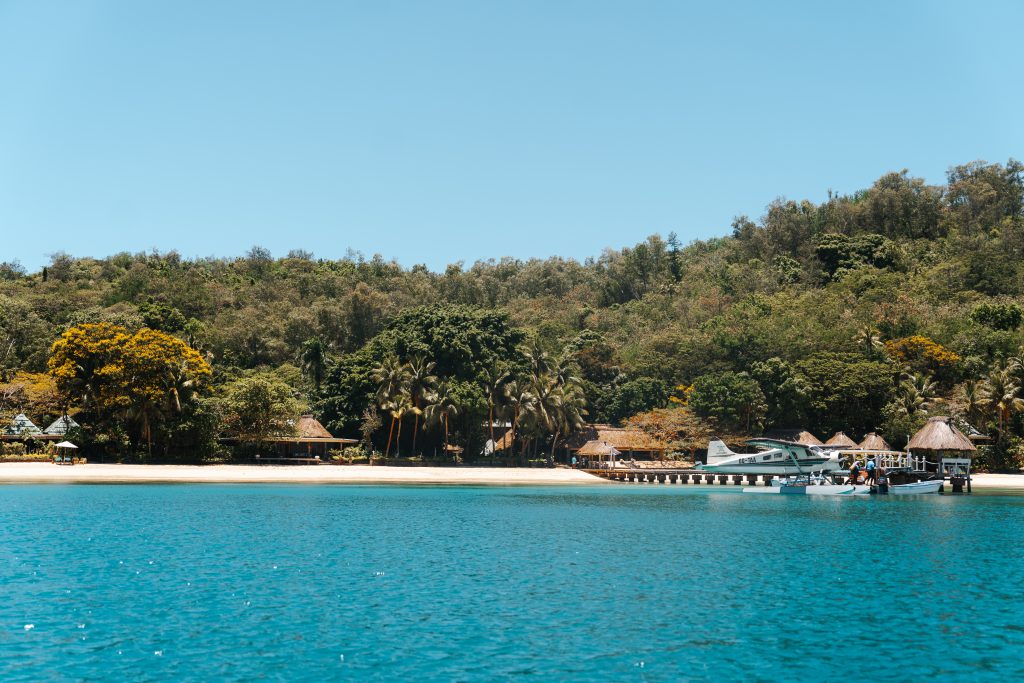 Turtle Island
Turtle IslandGuests arrive at Turtle Island by float plane.
My travels usually land me in the middle of nowhere, far away from people, but Turtle Island nudges me out of my misanthropic shell with experiences modelled after traditional village life, including communal dining. Evening begins around a beach bonfire, where we share the day’s adventures with fellow guests against a backdrop of a smouldering tangerine sunset. Gathering around a long table for an alfresco dinner, we’re served family-style with a parade of steaming platters heaped with local lobster and fish, tender chicken kebabs and fresh salad and vegetables plucked from the on-site garden. Wine glasses and laughter chime in the air like bells.
The languid nights here don’t end with dinner. Later, we join the staff for a singalong on the sand under the branches of an ancient banyan tree. I’m offered kava, which is served in a coconut shell, and I’m told to receive it with one clap of my hands as a sign of respect. Kava is a bitter, earthy drink traditionally shared during social events or to mark ceremonial rites. It’s made by mixing water with the ground roots of a shrub in the pepper family, and the cold brown drink has a sedative effect. A few sips leave my tongue tingling, and after a couple of cups, I’m tempted to doze off under the stars. The strumming of acoustic guitar fills the warm night, and the waves lapping at the shore join in on the rhythm. No one is in a rush to leave. It’s this slowing down of time that starts to work its magic on me, and the carefree atmosphere is amplified by a sense of nostalgia that makes me feel far away from frenzied city life.
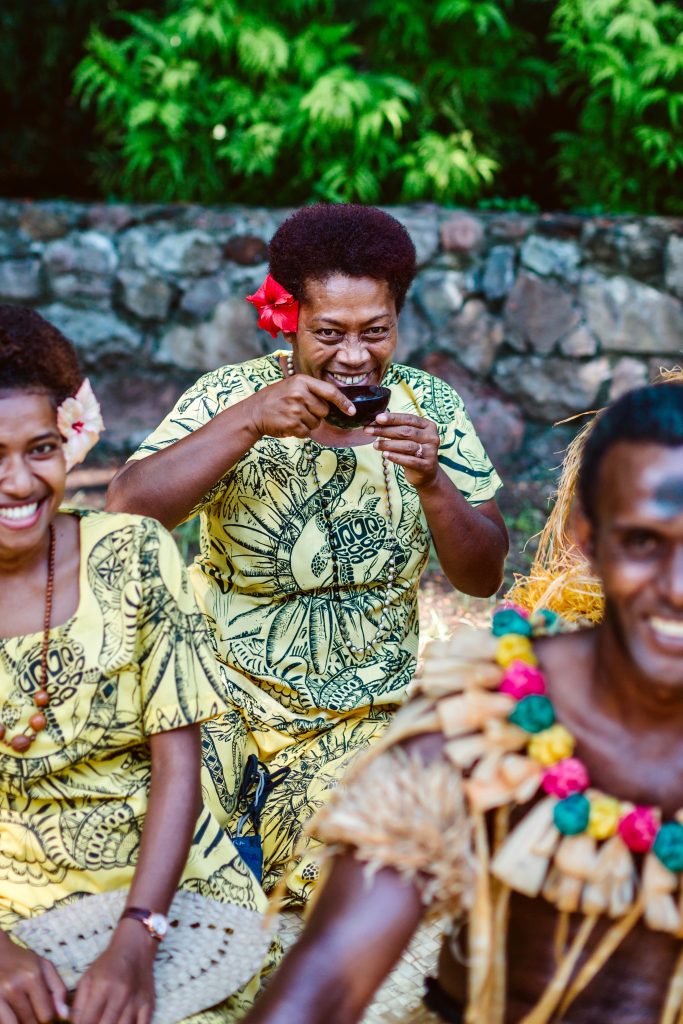 Turtle Island
Turtle IslandTurtle Island’s local Fijian staff share a traditional drink of kava.
Perhaps that’s partly thanks to a lingering feeling of timeworn glamour that hangs in the humid air. Over the years, Turtle Island has hosted everyone from Ringo Starr to Britney Spears, and shortly after Evanson purchased the island, he was approached by film producers who were location scouting for the 1980 remake of The Blue Lagoon, starring a young Brooke Shields. Evanson agreed to their use of the island, and it was only after the project finished filming (during which Evanson built several bures for the cast) that he considered creating a resort and opening Turtle Island to the public. There’s still a whisper of ’80s Hollywood in details like the in-room sunken Jacuzzis and the burnished tiki-style wooden bar.
“It’s this slowing down of time that starts to work its magic on me, and the carefree atmosphere is amplified by a sense of nostalgia that makes me feel far away from frenzied city life.”
These elements suit the unhurried pace here, where days are filled with bicycle rides along cool, leafy trails and snorkelling over kaleidoscopic reefs. One morning begins before dawn on a horseback ride through the dark forest. By the time we reach the beach, the sunrise bleeds pink on the horizon. We tuck into coffee, pastries and fruit on the sand, and as the morning warms, we dive into the refreshing waves. On one of our last evenings, we’re treated to a meke performance, an ecstatic traditional dance that recounts Fijian history through song and ends with all of us guests joining the dancers in a kava-fuelled conga line.
But it’s the peace of mind that comes with not having to plan excursions, stick to a schedule or scour a city for a dinner spot and the quiet moments of doing absolutely nothing that make me feel most present and aware of the beauty of the place. On our last day, I float on my back in the shimmering blue ocean, finding it hard to pull myself away and head to shore. I don’t know how long I’ve been out here, but no one needs to tell me to relax.
See more accommodation options at booking.com
Newsletter
Join our mailing list for the latest and biggest in fashion trends, beauty, culture and celebrity.
Read Next

Fashion
Bella Hadid Glows in a Strapless Lace Dress With a Sheer Corseted Bodice
Hadid was also seen that same day promoting her new fragrance brand ‘Ôrebella.
by : Briannah Rivera- May 3rd, 2024
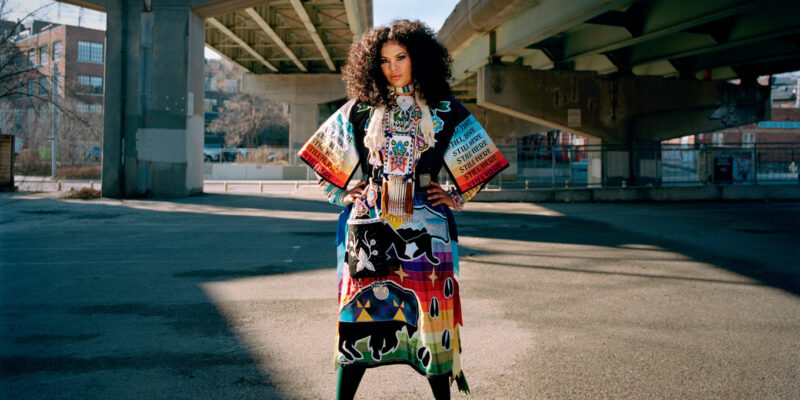
Fashion
This Year’s Indigenous Fashion Arts Festival Is Sure to Impress
"Creating an opportunity for us to work collectively—prioritizing language and tradition—is of the utmost importance. Our similarities are inspired and shaped by the legacies left to us by our ancestors.”
by : Kelly Boutsalis- May 3rd, 2024
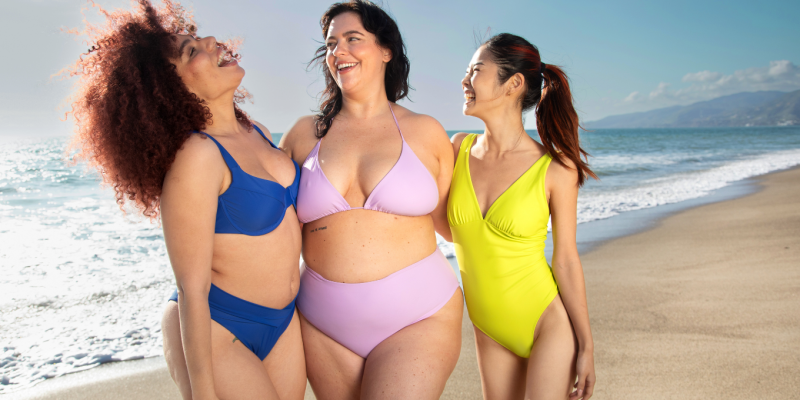
Beauty
Summer Prep: How to Feel Confident in Your Swimsuit
New Size-Inclusive Swimwear: Gillette Venus partners with The Saltwater Collective to Launch a Collection for Any Body
by : ELLE Canada- Apr 24th, 2024

